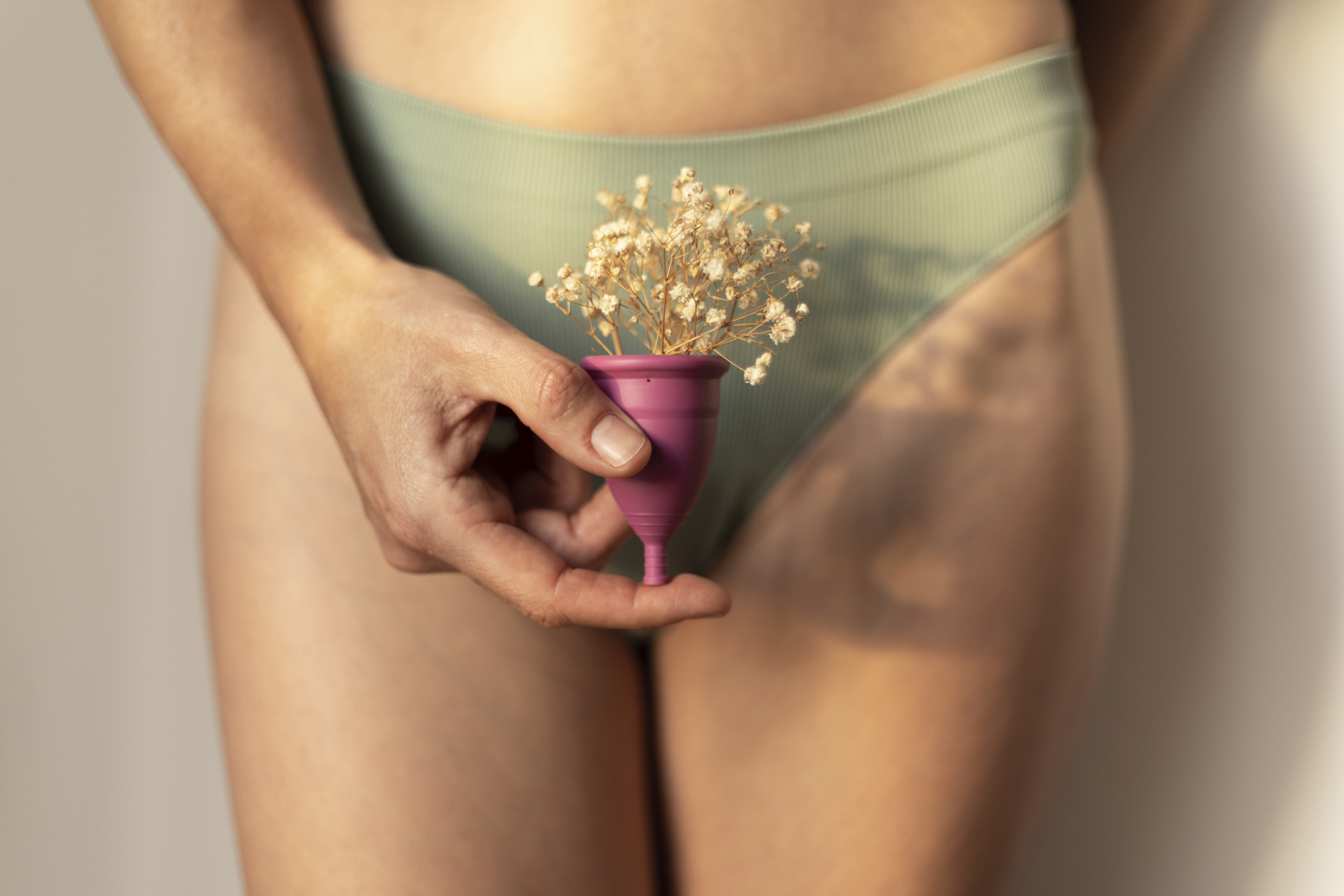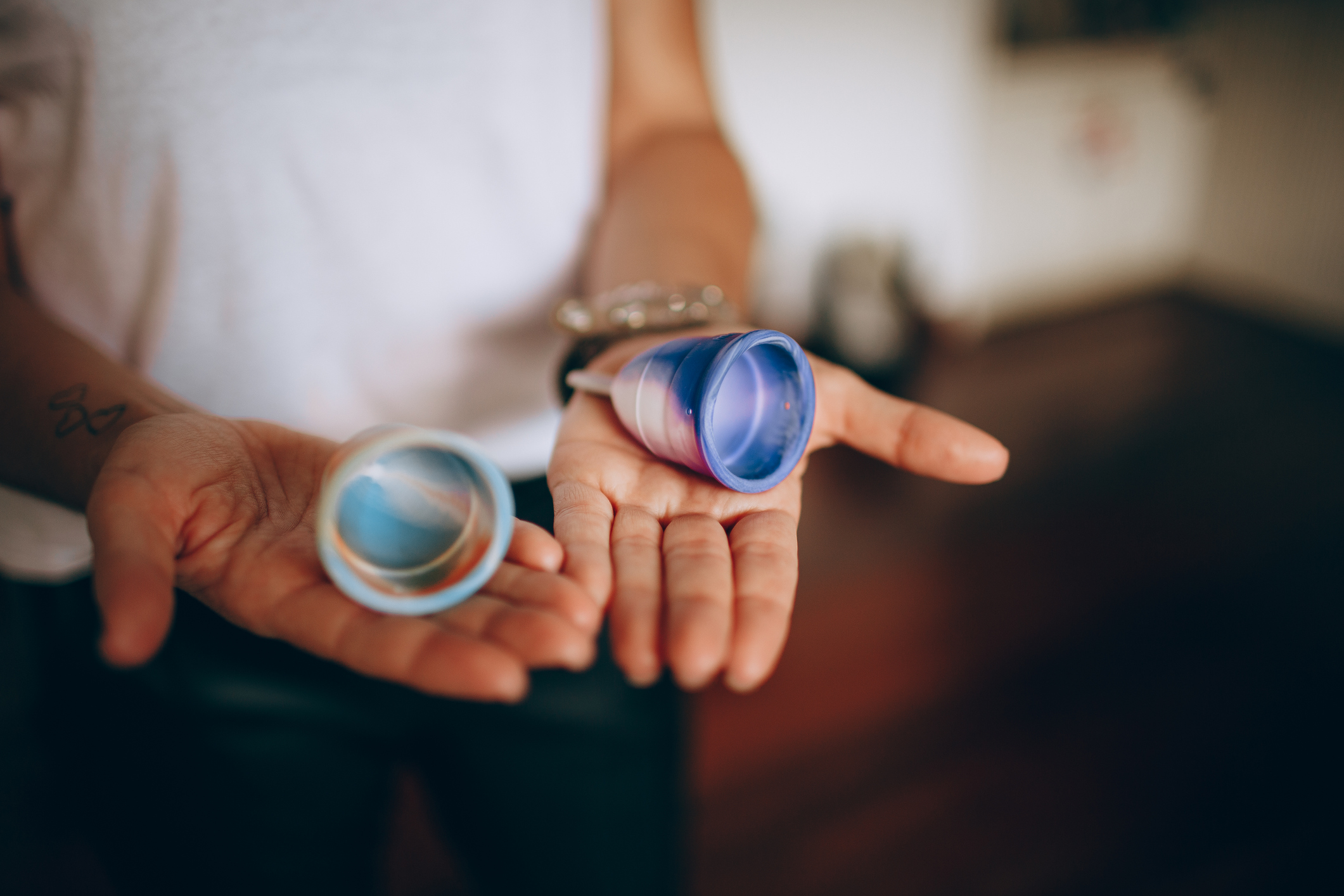I tried using a period cup and this is what (honestly) happened
"The thought of using one used to make my cervix shudder... But am I glad I tried it? Absolutely."


"The thought of using one used to make my cervix shudder... But am I glad I tried it? Absolutely."
You'll all have heard of using a cup for your period - you know, opting for a plastic cup to insert into your vagina rather than tampons or pads, which cause a tremendous amount of waste.
And if you've wondered what it's actually like using one - insertion and all - you're in the right place. We've tried and tested a whole load of things for you guys, in the name of journalism - from the raved-about Symprove supplement, to acupuncture for bloating.
Next up? One MC writer details her own experience of using a cup for period. Scroll to read how she got on and don't miss our health editor's guide to how to choose a menstrual cup - plus her 14 favourites - while you're here.
Using a cup for period: "The phrase period cup made my cervix shudder, but I was surprised."
OK. Let me give you some background as to why I even thought about using a cup for my period. I've been vegetarian for 11 years and although I'm clued up on recycling facts and general how-to, after recent global disasters, something inside me clicked and I'm trying to be more environmentally conscious.
But, I'm also a 28-year-old woman who likes to live an easy, convenient life.
And no, the two don't always go hand-in-hand.
Celebrity news, beauty, fashion advice, and fascinating features, delivered straight to your inbox!
I try to make changes where I can and it was only a matter of time until I came across the menstrual cup. It's good for the environment, my wallet, it makes bacterial infections like thrush less likely because there's nothing in them that should disrupt your pH levels and its convenience is pretty empowering.
According to research from Intimina, women who use menstrual cups can also have better sex. Apparently 84% of the 1,500 who trialled a menstrual cup felt more confident during the period phase of their menstrual cycle phase, whilst 78% felt more comfortable in their body. And thanks to this, 28% reported an improvement in their sex life as the cup decreased dryness. So, I was sold on giving it a go.
When you think that a lot of mainstream tampons and pads (read our guide to how to use a tampon, here) contain bleached rayon which can create the byproduct dioxin (which is carcinogenic, no less,) it might be time to think about your other options which also include organic cotton and unbleached feminine products.
However, the words "period cup" have always made my cervix shudder. I'm not even a massive fan of tampons TBH so this was going to be a stretch. (Excuse the pun.)
Choosing the right brand of period cup
Even though period cups were first invented by midwives in 1932, they're having a moment. Intimina has their own line of menstrual cups, as do Boots and Superdrug. Then you've got Mooncup - the most well-known brand - and for those more organically minded, OrganiCup.
I decided to try the OrganiCup. They are all BPA free and made of medical-grade silicone but this one was also free of latex, dyes, toxins or bleaches which, as an organic beauty lover, ticked all my boxes. They're reusable for years and you can wear them for up to twelve hours.
12 hours means I can insert it in the comfort of my own home and take it out in the comfort of my own home, too. It also means no more of those awkward office trips to the toilet smuggling sanitary products up my sleeve.
I got size A which is recommended for women who have not given birth before and it can hold up to 25 ml of blood which is the equivalent of three super tampons. (You're going to be reading more about blood soon so the squeamish of you might want to close this tab now.)
Working out how to put the period cup in
So I decided to give it a go. Was it easy, no? Was it rewarding? Ultimately, yes. Will I be using it every period? Maybe not to start with...
I struggled to put it in. In fact, to such a degree, I asked my boss if I could work from home that day because I knew it was going to be a process.
I first tried using the 'c fold' method where you essentially fold the cup in half and then put it inside you. Not only did I need to use an organic water-based lubricant to get this in, I could tell that the cup wasn't opening inside me (AKA suctioning) but I didn't realise this until after I smugly put on white underwear and saw the leakage.
Disheartened, I went to take it out and this resulted in a slight panic because I couldn't get it out initially. Unlike a tampon, it requires a little more grip on the stem to pull it out and by that point, it was pretty deep inside me. But, I remembered the instructions said I needed to use my stomach muscles to push it downwards so I did.

Without realising I had said muscles, it was an enlightening discovery for me. I 'pushed' down until I had a good grip on the stem and then pulled it out a little bit too enthusiastically - and yes, it was like a mini murder scene. Rather than carefully removing it and pouring the contents down the toilet, I pulled it out like I was plucking out a hair. My excitement over my newfound muscles was a little misplaced and premature, obviously.
So, I Googled and watched YouTube videos on different folds (they often demonstrate these inside a champagne flute which I thought made the whole experience that much chicer) and decided to take two with the 'punch-down fold' or the 'seven-fold' as these are meant to help the cup open inside you easier.
Take two of taking it out was a lot better. I pushed slightly until the stem poked out and then I pulled it out while sitting on the loo and it was significantly tidier. Although, when I washed it in the sink, I stupidly poured my tap straight into the cup so things got a little messy there - but, progress.
Now onto my third attempt trying to insert it. I used the 'punch-down fold' and I needed to get a little bit more up in there to get it to open up but I definitely heard a slight suction noise when I moved it around and once it was in - it was actually pretty comfortable because you can't feel it at all.
My final thoughts on period cups:
I definitely will need some practice before I'm 100% convinced by this method full-time but am I glad I tried it? Absolutely.

But, don't just take it from me, I also talked to another journalist, Lisa Bowman, a veteran user of these, who assures me to keep going...
'I’ve been using a Mooncup for a year now, after working at a surf camp in India and being one of the few who’d never used one,' Lisa tells us. 'I’d always seen Mooncup ads on the back of service station toilet doors and mocked them, but suddenly it made so much sense – tampons are really hard to get hold of in countries like India, so instead of bringing a huge supply of tampons in your rucksack, you just bring a small Mooncup. Plus, it holds more blood than a tampon so you can stay in the water longer.
When I looked into it more, I realised how bad for the environment tampons are (they just end up in landfills or the sea, doubly so if there’s an applicator involved) and how bad for your vagina they are (they basically suck all the moisture out of you), especially if they’re not organic. Plus, you can get a menstrual cup for less than £20 and they last ages, so you save so much money. I got a cup as soon as I got back to the UK - it was a no brainer.
It took a few cycles to get used to it – I was always paranoid that it was leaking (it rarely was) so I’d recommend using liners or towels until you get used to it, for peace of mind. It also took a while to get the hang of removing it when it was full – at first there was a lot of blood on the bathroom floor, but now I’m a pro. It can also be awkward trying to rinse it in public bathrooms but I never need to change it at work anyway (you can keep it in longer than a tampon). If you do need to, just take a bottle of water into the cubicle with you. You do have to really get your fingers up there to put it in/get it out but if you’re used to using non-applicator tampons, you should be fine. And shouldn’t we all be more comfortable with our bodies anyway?'
